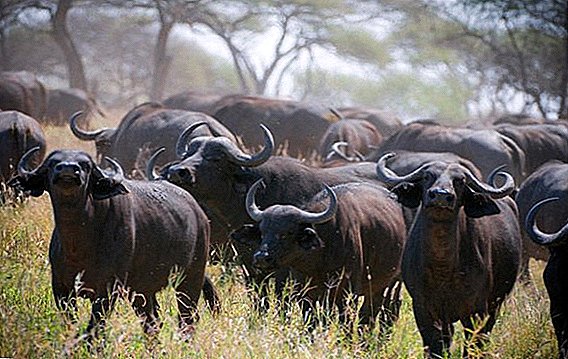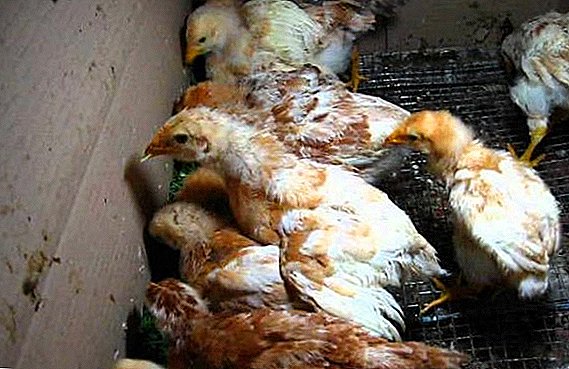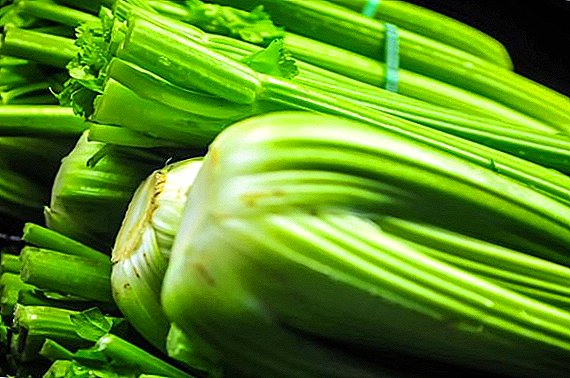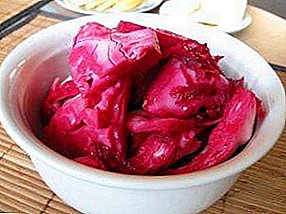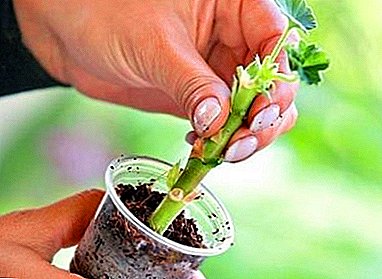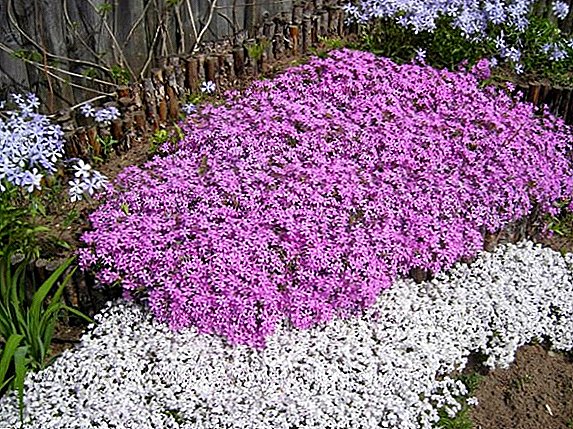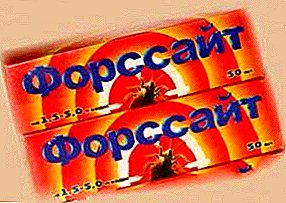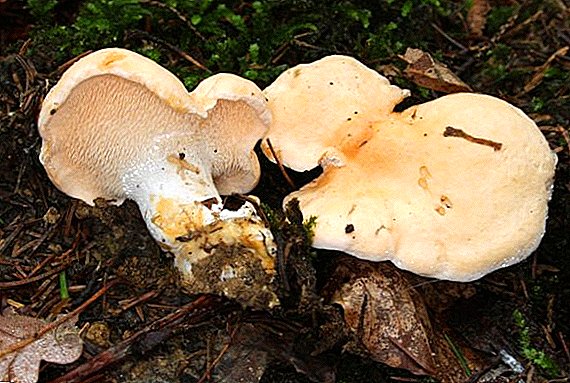 Ezhovikami or blackberries are called mushrooms, which were previously attributed to the Gidnum family, and today belong to different families and genera. There are many types of hedgehog. On the most common will be discussed in our article.
Ezhovikami or blackberries are called mushrooms, which were previously attributed to the Gidnum family, and today belong to different families and genera. There are many types of hedgehog. On the most common will be discussed in our article.
Are edibles edible?
Not all types of hedgehogs are of interest to mushroom pickers. Among the many varieties there are edible, conditionally edible and inedible. They do not contain toxic substances. The taste of all ezhovikov is not very high. To taste, they are somewhat reminiscent of mushrooms or chanterelles. These mushrooms are best consumed at a young age.
Types of mushrooms and their description
Read the description and photos of different varieties of the yearbook, as well as recommendations for their use.
Meet with edible types of mushrooms.
Edible
Among the edible the most common are six species. Below you will find their brief description. Alpine. Mushrooms of this type reach in sizes from 5 to 30 cm. They are light, however, over time they darken and get a dirty shade. They are a multitude of twigs with spikes in the form of cones 2 cm long, placed on a low stem. Typically, representatives of the alpine species live on the fir, but may coexist with other conifers. Most often come across in mountainous areas from mid-summer to mid-autumn.  White. The white hedgehog is often confused with another species - the yellow hedgehog, since it looks like its small copy, with only a white or yellowish hat. It has a diameter of 5 to 12 cm. In young specimens it is slightly convex, with the ends bent down. In old age it turns into prostrate with a notch in the middle. At the bottom are short spines whitish or pinkish in color.
White. The white hedgehog is often confused with another species - the yellow hedgehog, since it looks like its small copy, with only a white or yellowish hat. It has a diameter of 5 to 12 cm. In young specimens it is slightly convex, with the ends bent down. In old age it turns into prostrate with a notch in the middle. At the bottom are short spines whitish or pinkish in color.
They come on a leg that reaches a height of 6 cm and a width of 3 cm. It is painted white. The flesh is white, pleasant to the taste and smell, has fruit notes. It is tougher than the yellow urchin. Appears in almost all types of forests in North America, Eurasia. Forms mycorrhiza with conifers. It grows only on lime soils, suitable for boiling, frying, salting, drying.  Comb A representative of this species has an interesting appearance, due to which it cannot be confused with any other mushroom - the fruit body is formed as a set of falling scallops up to 25 cm long in beige, cream, yellow, white colors. Its weight reaches two kilograms. The shape is round or incorrect. The flesh is fleshy, painted white. Mushroom in the course of "quiet hunting" comes across very rarely. It can be seen on the trunks of trees, in the faults in the Crimea, the Far East and in China.
Comb A representative of this species has an interesting appearance, due to which it cannot be confused with any other mushroom - the fruit body is formed as a set of falling scallops up to 25 cm long in beige, cream, yellow, white colors. Its weight reaches two kilograms. The shape is round or incorrect. The flesh is fleshy, painted white. Mushroom in the course of "quiet hunting" comes across very rarely. It can be seen on the trunks of trees, in the faults in the Crimea, the Far East and in China.  The time of appearance - the end of summer-mid autumn. Due to the original appearance, it has many other names - lion's mane, monkey head, mushroom noodles, grandfather's beard. It is used in Chinese traditional medicine to strengthen the immune system and treat diseases of the gastrointestinal tract, as well as an antiseptic. This is one of the most delicious representatives of ezhovikov. Its taste is somewhat similar to the meat of shrimp or crabs. In the food industry is used as a flavoring agent.
The time of appearance - the end of summer-mid autumn. Due to the original appearance, it has many other names - lion's mane, monkey head, mushroom noodles, grandfather's beard. It is used in Chinese traditional medicine to strengthen the immune system and treat diseases of the gastrointestinal tract, as well as an antiseptic. This is one of the most delicious representatives of ezhovikov. Its taste is somewhat similar to the meat of shrimp or crabs. In the food industry is used as a flavoring agent.
Did you know? Experts are constantly conducting a study of the antitumor action of the hedgehog comb. In Russia, the staff of the State Research Institute for New Antibiotics. GF Gauze RAMS and the Institute of Organic Chemistry. N. D. Zelinsky. Conducted experiments on laboratory mice proved that an aqueous extract of the fungus can inhibit tumor growth and prolong the life of animals.Yellow. The most common representative ezhovikovyh. It has a cap reaching 4 to 15 cm in diameter. At a young age, it is painted in light shades of red or orange. In mature - it becomes darker. At first it is convex, and by the end of life it is flat with the edges downward. The inner side is covered with spines. The stem of a yellow cylinder in the form of a cylinder, height from 2 to 8 cm, smooth, yellow. The flesh crumbles heavily. Painted in yellow tones. On taste - with a fruit note.
 In old specimens, the pulp is hard, bitter. It grows on the Eurasian continent and in the countries of North America. Displayed from mid-June to late October. Fruits before the onset of the first frost. Gathers for the purpose of eating in fried, boiled and salted species. Especially appreciated by the French. Requires pre-soaking to eliminate the bitter taste. It is also desirable before cooking to get rid of spines.
In old specimens, the pulp is hard, bitter. It grows on the Eurasian continent and in the countries of North America. Displayed from mid-June to late October. Fruits before the onset of the first frost. Gathers for the purpose of eating in fried, boiled and salted species. Especially appreciated by the French. Requires pre-soaking to eliminate the bitter taste. It is also desirable before cooking to get rid of spines.A lot of vitamins in themselves have mushrooms aspen mushrooms.Coral-like. The fruit body of this species is similar in appearance to the coral branch. It has many white branches. The flesh of the young representatives of the species is white. As soon as the fungus becomes mature, it turns yellow. It grows on dead trees. The mushroom is considered edible, but its collection is prohibited due to its protection status - it is recorded in the Red Book of Russia as a rare species.
 Antenna. This fungus forms accreted hatted fruit bodies of white or pink color, in old age - yellow, with blunt or sharp edges, sometimes with a fringe. Thick, long (up to 1 cm) spines of white color are placed on the upper part, acquiring a brown color as they mature. The flesh is white or pink, soft. In food can be used only in young specimens. In old mushrooms, it is tough, tasteless. Antennah is widely represented in the Northern Hemisphere. Appears in July, ends fruiting in early fall.
Antenna. This fungus forms accreted hatted fruit bodies of white or pink color, in old age - yellow, with blunt or sharp edges, sometimes with a fringe. Thick, long (up to 1 cm) spines of white color are placed on the upper part, acquiring a brown color as they mature. The flesh is white or pink, soft. In food can be used only in young specimens. In old mushrooms, it is tough, tasteless. Antennah is widely represented in the Northern Hemisphere. Appears in July, ends fruiting in early fall.
Conditionally edible
Most representatives of the Yezhovikov classify as conditionally inedible or inedible mushrooms.
Reddish yellow. This variety has a smooth orange-red cap of irregular shape with curled edges. At the bottom there are a lot of spines moving to the leg in the form of papillae. The leg is thick and dense, yellowish in color. The flesh is fleshy. It has a cream color. When squeezed orange. Mushroom fruits in the fall. It is found in mixed and coniferous forests. Motley. The hedgehog is variegated or tiled, scaly, has a hat of brown or gray color with dark scales arranged in a circle. At a young age, its shape is convex with raised edges; in the mature, it turns into a concave or funnel-shaped with curved edges. The leg of this species reaches 6-8 cm in height. It is thick, smooth, slightly fibrous, in the form of a cylinder, thickening towards the bottom. The color is in harmony with the hat - brown or gray. The flesh is white or gray, juicy, with a pleasant mushroom smell.
Motley. The hedgehog is variegated or tiled, scaly, has a hat of brown or gray color with dark scales arranged in a circle. At a young age, its shape is convex with raised edges; in the mature, it turns into a concave or funnel-shaped with curved edges. The leg of this species reaches 6-8 cm in height. It is thick, smooth, slightly fibrous, in the form of a cylinder, thickening towards the bottom. The color is in harmony with the hat - brown or gray. The flesh is white or gray, juicy, with a pleasant mushroom smell.  The old representatives smacks of rot. The period of occurrence of representatives of this species - the end of summer-mid autumn. It grows in Eurasia, in areas with moderate climatic conditions. Hedgehog motley ranked as low-quality mushrooms. It is not recommended to use it without heat treatment, especially gray urchin - poisoning is possible. At a young age, the fungus can be used for salting or as a seasoning after boiling for 8-10 minutes.
The old representatives smacks of rot. The period of occurrence of representatives of this species - the end of summer-mid autumn. It grows in Eurasia, in areas with moderate climatic conditions. Hedgehog motley ranked as low-quality mushrooms. It is not recommended to use it without heat treatment, especially gray urchin - poisoning is possible. At a young age, the fungus can be used for salting or as a seasoning after boiling for 8-10 minutes.
Did you know? Norwegians use old specimens of a colorful grasshopper to get a bluish-green paint for dyeing sheep wool.Psevdoezhovik gel. Another name for this species is ice fungus. His hat resembles a fan or tongue with curved edges. Grows in diameter by 7.5 cm. Spines are located on its lower part. The upper part is painted in white, gray tones. In adulthood, it becomes dark. The leg has a height of 5 cm. However, it may not be. The pulp is gelatinous, translucent. It has a resinous smell and taste. Found on three continents - Eurasian, North American, Australian.

Inedible
Many sources claim that all types of hedgehogs are not dangerous for humans and they do not contain poison. They are considered inedible only because of the lack of taste or too bitter taste, as well as an unpleasant aroma. Inedible species of ezhovikov much more than those that can be eaten.
It will be interesting to learn how to distinguish pale toadstool and poisonous mushrooms growing on trees, from edible waves and boletus.Striped. This urchin is not a frequent visitor in the mixed forests of the Far East and Siberia; it is a rare species. In appearance it is very reminiscent of a two-year dryack. He is red-brown with light stripes large cap measuring 10 cm in diameter. Leg red, thin. Fruits in early autumn. Unsuitable for food.
 Finnish. This species comes across the eyes of mushroom pickers very rarely. His hat grows up to 15 cm in circumference. In young representatives, it is convex, of irregular shape, in old representatives it is prostrate. Painted in brown tones. On its lower part there are dense spines of 0.3-0.5 cm in length. The leg is short - up to 5 cm in length. To the bottom it becomes already. It happens in different colors. Dense pulp smells good, but the taste is very unpleasant, with a bitter taste. This hedgehog lives in coniferous and mixed forests at the beginning of the autumn period.
Finnish. This species comes across the eyes of mushroom pickers very rarely. His hat grows up to 15 cm in circumference. In young representatives, it is convex, of irregular shape, in old representatives it is prostrate. Painted in brown tones. On its lower part there are dense spines of 0.3-0.5 cm in length. The leg is short - up to 5 cm in length. To the bottom it becomes already. It happens in different colors. Dense pulp smells good, but the taste is very unpleasant, with a bitter taste. This hedgehog lives in coniferous and mixed forests at the beginning of the autumn period. The black. This representative of inedible ezhovikov can be found in pine and mixed forests from mid-summer to late October, but quite rare. It has a large cap, reaching a diameter of 3-8 cm. Immediately after the appearance, it has a bright blue color, grows gray as it gets older, and turns black at the end of its life. The hat merges with a thick and short leg in black. The flesh is firm, also black. Hymenophore spiky blue, and then gray.
The black. This representative of inedible ezhovikov can be found in pine and mixed forests from mid-summer to late October, but quite rare. It has a large cap, reaching a diameter of 3-8 cm. Immediately after the appearance, it has a bright blue color, grows gray as it gets older, and turns black at the end of its life. The hat merges with a thick and short leg in black. The flesh is firm, also black. Hymenophore spiky blue, and then gray.  Rough. This species is also called dirty, untidy. It got its name due to the structure of the hymenophore with spikes and the presence of protruding scales on the cap, because of which it seems that it is cracked and untidy. Gray-pink thorns from the bottom of the hymenophore come on the leg. The hat has an irregular shape with a wavy edging. Its top is flat convex with a notch in the center, painted in light brown tones, scales - dark brown.
Rough. This species is also called dirty, untidy. It got its name due to the structure of the hymenophore with spikes and the presence of protruding scales on the cap, because of which it seems that it is cracked and untidy. Gray-pink thorns from the bottom of the hymenophore come on the leg. The hat has an irregular shape with a wavy edging. Its top is flat convex with a notch in the center, painted in light brown tones, scales - dark brown.  Leg in the form of a cylinder, narrowed to the bottom. The base is blue or gray-green. Its entire surface is dotted with pink scales. The pulp of the fungus is bitter with a sharp specific flavor. It has a white color with a pink tint. The grungy hedgehog grows in symbiosis with conifers and deciduous trees from mid-summer to mid-autumn.
Leg in the form of a cylinder, narrowed to the bottom. The base is blue or gray-green. Its entire surface is dotted with pink scales. The pulp of the fungus is bitter with a sharp specific flavor. It has a white color with a pink tint. The grungy hedgehog grows in symbiosis with conifers and deciduous trees from mid-summer to mid-autumn.Read also about the fungi family - russia.Klimakodon beautiful. The mushroom can be recognized by a flat-convex or convex cap. In form, it can be in the form of a semicircle or fan. In color - white, brown, orange. Spines located 0.8 cm long on its lower part. They are white or oranged. Klimakodon has no legs. The flesh is white, fibrous. Her taste and smell are practically absent. Most often, this species comes across in the tropics and subtropics on dry trees or on dead trees.
 Klimakodon northern. Easily recognizable mushroom, as it grows in a bizarre way - several bright plates in the form of sheets or tongues grow together at the base and are located one above the other. Each cap grows in diameter from 10 to 30 cm. Their edges are wavy. Mushrooms can grow together and reach a mass of 30 kg. The flesh is firm, hard, pubescent, with a sharp aroma. Hymenophore spikovy. Spines up to 2 cm long. Grows on weak deciduous crops. Fruits in the middle of the summer.
Klimakodon northern. Easily recognizable mushroom, as it grows in a bizarre way - several bright plates in the form of sheets or tongues grow together at the base and are located one above the other. Each cap grows in diameter from 10 to 30 cm. Their edges are wavy. Mushrooms can grow together and reach a mass of 30 kg. The flesh is firm, hard, pubescent, with a sharp aroma. Hymenophore spikovy. Spines up to 2 cm long. Grows on weak deciduous crops. Fruits in the middle of the summer. Grow together (felodon). This mushroom forms a cap with a diameter of 4 cm of black color of irregular shape. Spines of white color are formed on its lower part. The hat is placed on a short thin black leg with a felt patina. It grows from late summer to the first frost in sandy soils in coniferous forests and mixed forests.
Grow together (felodon). This mushroom forms a cap with a diameter of 4 cm of black color of irregular shape. Spines of white color are formed on its lower part. The hat is placed on a short thin black leg with a felt patina. It grows from late summer to the first frost in sandy soils in coniferous forests and mixed forests.
Where to look for hedgehogs: ecology and distribution
The area of distribution of Ezhovikov is Eurasia, North America, Australia, mainly in areas with moderate climatic conditions, but also in cool regions, such as the Far East, Siberia, the Urals. Usually they choose sandy soil in coniferous and mixed forests, grass covers and moss for fruiting. Almost all hedgehogs form mycorrhiza with conifers, so most often they can be found next to pines, spruces, and are also found near birch trees.
Learn how to dry oyster mushrooms, pickle chanterelles, freeze mushrooms, wild mushrooms, chanterelles, oyster mushrooms and white mushrooms.Some species settle on old, dead trees, stumps. They can grow both individually and in groups. When grouped, their caps almost merge into one, sometimes forming “witch circles”. The period of fruiting begins at the beginning of summer and lasts until mid-autumn. Mass fructification falls on August-early September.
Is it possible and how to grow mushrooms in the country?
Hedgehogs can be grown in country conditions. Wooden sticks with spores can be purchased in stores with garden products. In the open air, mushrooms can be planted from April to October, indoors, at any time of the year. They are germinated in wood, for example, on newly felled logs cleared from shoots. They should be 15–20 cm in diameter and 1 m long.  Before placing the mushroom sticks, the wood should be soaked in water and drill holes in them 4 cm long and 0.8 cm in diameter every 10 cm. After the mushroom sticks are dipped, the logs are covered with foil and placed in a warm and dark room. They will need to be watered twice or thrice in seven days.
Before placing the mushroom sticks, the wood should be soaked in water and drill holes in them 4 cm long and 0.8 cm in diameter every 10 cm. After the mushroom sticks are dipped, the logs are covered with foil and placed in a warm and dark room. They will need to be watered twice or thrice in seven days.
Important! It is necessary to work with mushroom sticks with well disinfected hands or protected sterile gloves.To the light of the logs endure after the mycelium appears. Harvest should be expected after six months. For the winter for logs will need to do shelter. Fruit bodies should be cut off at a young age.
Rules of storage ezhovikov
Hedgehogs can be stored in the refrigerator. However, not too long - up to three days, due to the appearance of stiffness and bitterness. Without a refrigerator, they are usable for only two to three hours, then become dark. Before placing them in storage, they should be washed, soaked in salted water, dried. Store in a tightly closed bag. Hedgehogs are suitable for drying, but with this method of preservation, they become rigid. Dried mushrooms are used as a basis for soups, broths, dressings, sauces, gravy.
Very useful to eat such mushrooms as: pig, cep, boletus, boletus and champignons.Their shelf life is two to three years. Before drying, mushrooms are not washed, but only cleaned and wiped with dry material. Then cut into thin plates of 0.5 cm. They are laid out on a baking sheet, covered with parchment, so that they do not touch each other. Then placed in the oven, preheated to 45 degrees. After the plates are slightly dried and can easily tear away from the parchment, the temperature is raised to 70 degrees. Drying is carried out with a slightly open oven door. Spend it in several stages over two days. Ready-made mushrooms should bend, but not break. Mushrooms can also be pickled.
 To do this, they should be sorted out, cleaned and soaked in saline for three to four hours. Then they should be cut into pieces of 4-6 cm. For one kilo of mushrooms you will need 40-50 g of salt, dill, onion, garlic, horseradish. The pieces will need to be boiled until ready in salted water, washed and placed in a colander. Sprinkle with spices and salt, put in a vessel, which press down with a load. The product should be sent to a cold place for six to eight days. After that, the mushrooms can be used for pickling, cooking soups and main dishes. The best way to store is to freeze fresh young mushrooms. At a temperature of -12 degrees their shelf life is three months, with -18-ti - six months, with -25-ti - a year.
To do this, they should be sorted out, cleaned and soaked in saline for three to four hours. Then they should be cut into pieces of 4-6 cm. For one kilo of mushrooms you will need 40-50 g of salt, dill, onion, garlic, horseradish. The pieces will need to be boiled until ready in salted water, washed and placed in a colander. Sprinkle with spices and salt, put in a vessel, which press down with a load. The product should be sent to a cold place for six to eight days. After that, the mushrooms can be used for pickling, cooking soups and main dishes. The best way to store is to freeze fresh young mushrooms. At a temperature of -12 degrees their shelf life is three months, with -18-ti - six months, with -25-ti - a year.How to cook hedgehogs
In cooking ezhoviki used infrequently. Is that the French of them prepare a variety of dishes and are among the best mushrooms. The calorie content of the product is low - 100 grams contains 30 kcal. As for nutritional value, then there are 3.7 grams of proteins, 1.7 grams of fat and 1.1 grams of carbohydrates.
Important! Since urchins accumulate harmful substances from the environment in fruit bodies, only mushrooms collected in ecologically clean areas should be consumed.There are a few tips on how to cook ezhoviki. So, before cooking, be sure to remove the spines. There are some specimens that require mandatory boiling to remove bitterness. The same varieties as comb, antennae, coral, do not require boiling. They can immediately fry or pickle.

Frying
In order to carry out the frying of mushrooms, they must be washed and remove the remains of mycelium. Those varieties that require pre-treatment should be boiled or soaked. Mushrooms cut. Then pour vegetable oil on a preheated frying pan and put ezhoviki on it. Frying should be carried out on low heat. When the mushrooms are a little soft, you need to add the onion cut into thin rings or half rings and salt.
Если во время жарки испарился весь сок, следует накрыть сковороду крышкой. Грибы считаются приготовленными, когда они потемнели, издают приятный аромат и стали мягкими. Чтобы добавить пикантности и сделать их еще более мягкими, за пару минут до готовности необходимо добавить сметану. Ее нужно поместить лишь на поверхность грибов, дна она касаться не должна. By the way, unlike other mushrooms, there are varieties of urchin that during frying do not decrease in size.
Cooking
Before cooking mushrooms, remove the remnants of soil, spines from fruit bodies. They are washed under running water. Put in cold water, bring to a boil and boil for 15-20 minutes. For the soup, it is advisable to use an assorted mushroom, the dish will not be so fragrant just with a red spoon. Hedgehog - a mushroom that is not too appreciated by mushroom pickers.
Familiarize yourself with such mushrooms as: white fillings, aspen weed, chanterelles, satanic mushroom, aspen mushroom, morel and black truffle.It is often not taken because they consider it inedible, or they do not want to fool with spines, which pollute the basket and other mushrooms on the way home. However, some of its species are used for frying, boiling and salting. The most delicious are yellow, white and comb ezhoviki. Mushrooms are used in cooking only at a young age, since old specimens tend to taste bitter and have firm flesh. Some species are amenable to growing in country conditions.

Reviews from the network




